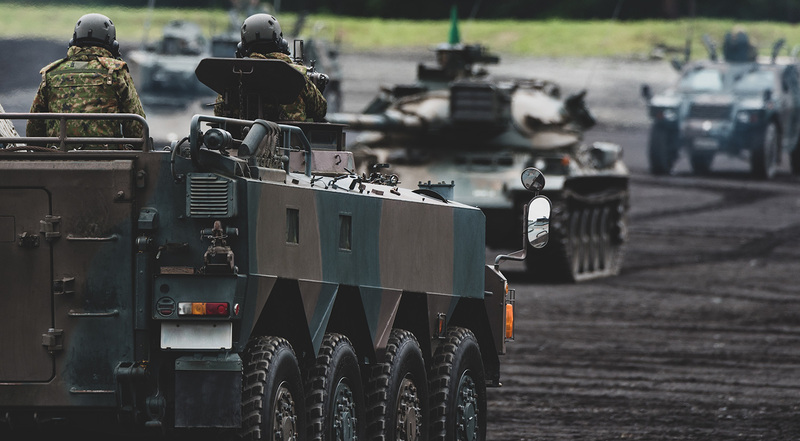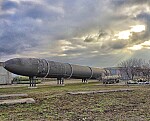Japan´s changing defense strategy
One of the most profound changes in defense policy and military spending is currently occurring in the Indo-Pacific, particularly Japan. This country is profoundly changing its defense policy and increasing military spending due to the growing challenge from China.
Japan is, according to the latest news, set to record the highest defense budget ever in Fiscal Year 2024. After approval from the Cabinet in December last year, Japanese self-defense forces will have almost 56 billion dollars at their disposal. It represents an increase of 16.5% compared to Fiscal Year 2023. In 2027, the Japanese defense budget will reach 62.5 billion dollars.

In the newest defense budget, the Cabinet focuses on air and missile defense, stand-off capabilities, the Air Force, and the Navy. Japanese Self-Defense Forces (JSDF) plan to acquire two Aegis System Equipped Vessels (ASEV) destroyers, joint development of the Glide Phase Interceptor project with the US, and funds for the maintenance of existing PAC-3, SM-3 IIA, and SM-6 missiles. In the category of stand-off capabilities, JSDF plans to acquire capabilities to engage ships and landing craft that invade Japanese territory. Those capabilities will come from both the foreign and domestic markets. JSDF will acquire Joint Strike Missile (JSM) Joint Air to Surface Standoff Missile (JASSM) and Tomahawk cruise missiles for Japanese vessels. It is currently unknown how many JSM and JASSM JSDF plans to acquire. Recently, Japan announced a deal for 400 Tomahawk land attack missiles. The Japanese Ministry of Defense plans to equip Aegis ships with Tomahawk missiles to be able to conduct strikes against hostile territory under the Japanese counterattack doctrine.
Japanese Air Self-Defense Force plans to acquire 8 F-35A fighter jets and 7 F-35B fighter jets that are supposed to take off from Izumo-class carriers in the future. The Japanese Navy also plans to acquire first two vessels of the new class of frigates equipped with long-range strike capabilities and advanced anti-submarine warfare capabilities. Under the Fiscal Year 2024 budget, the Japanese Navy will also buy eight Taigei class attack submarines.
The Japanese cabinet also approved the possibility of exporting lethal munitions under strict conditions. Now, Japan could export Patriot missiles manufactured in Japan to the United States. This situation is clearly linked to the lack of Patriot missiles after sending Patriot batteries and missiles to Ukraine.
Modernization is part of a new Japanese defense strategy approved mainly due to Chinese behavior in the Indo-Pacific. The new strategy attempts to address a possible invasion of Japan, including offshore islands, and the need to defeat such an invasion through standoff strikes linked with extensive cyber, space, and electromagnetic domains. The document states that „By FY 2027 or by five years from now, Japan will strengthen its defense capabilities to the point at which Japan is able to take the primary responsibility for dealing with invasions against its nation and disrupt and defeat such threats while gaining support of its ally and others “.
The Defense Buildup Program outlines four main areas for modernizing the JSDF. First, the JSDF will acquire stand-off capabilities, such as those mentioned in this article. Furthermore, JSDF will support domestic R&D with procuring antiship missile and Hyper-Velocity Gliding Projectile together with other hypersonic missiles.
Second, the JSDF will improve its air and missile defense through the procurement of PAC-3 MSE and according to sensors against hypersonic missiles. The JSDF will support domestic production by procuring a Type 03 surface-to-air missile. Air and missile defense will be improved also through procurement of the aforementioned Aegis System Equipped Vessels and new technologies such as microwave and laser systems.
Third, the JSDF will focus on unmanned systems for both intelligence, surveillance, reconnaissance, and targeting (ISRT) and strike missions. Last but not least, the fourth area is cross-domain capabilities, such as space, cyber, or electromagnetic capabilities.
Japan is profoundly changing its defense strategy and increasing its defense budget due to the challenge posed by China to maintain strategic stability in the Indo-Pacific. Due to the Japan-US defense pact, Europe must pay attention to the US commitment to defend Japan against any threat which could lead to extensive US involvement in Indo-Pacific.








